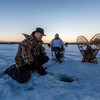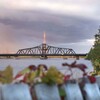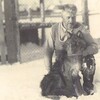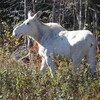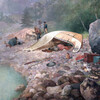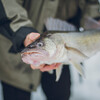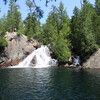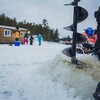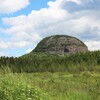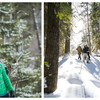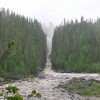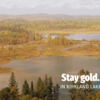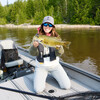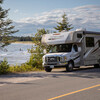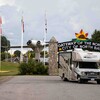
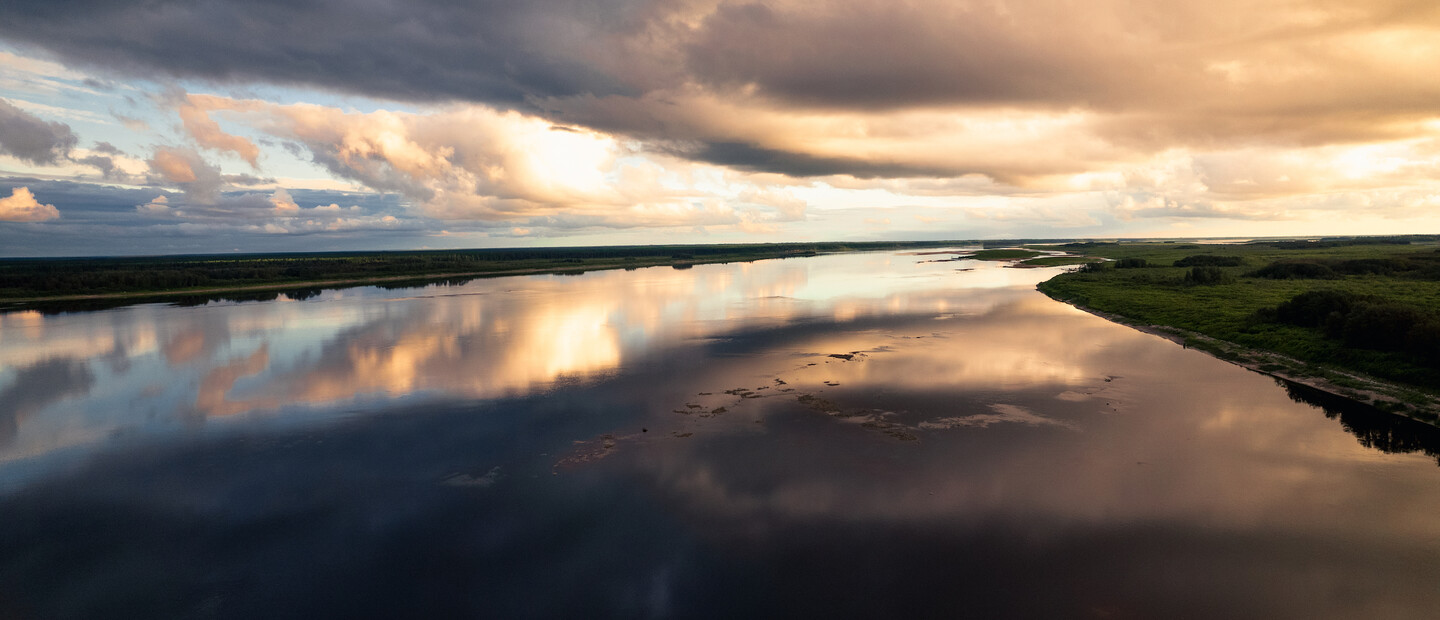
Complete Guide to Moosonee & Moose Factory Island
Situated in the Hudson Bay Lowlands just south of Ontario’s forgotten saltwater coastline lies the Moose Cree homelands, home to Moosonee and Moose Factory Island.
How to get to Moosonee & Moose Factory Island
Hop on Ontario Northland’s Polar Bear Express in Cochrane, Ontario and ride North through stunted black spruce and tamarack towards the end of the rail. There, you’ll find a destination unlike anywhere else in the province, rich in unique outdoor experiences, culture, and history. The area is also accessible by plane—check out Air Creebec & Thunder Airlines for flight options.
What sort of wildlife is there in Moosonee & Moose Factory Island
Outdoor enthusiasts will enjoy the otherworldly fishing on the Moose River. A hot spot for delicious walleye and Northern pike, these waters are an angler's dream. But they’re not just home to fish. Seals are also commonly found on sand bars along the Moose River. Heading north towards the southern tip of the Arctic Ocean you’ll have the chance to spot pods of Beluga Whales. You’ll want to bring your binoculars, but not just to see marine wildlife. Home to several migratory bird sanctuaries, millions of diverse species of birds flock to these regions in the spring and fall on their way to and from the Arctic.
Where to stay in Moosonee & Moose Factory Island
You can camp under the stars at Ontario’s northernmost operating park, Tidewater Provincial Park, or stay in one of the many accommodations in Moosonee, an Air B&B style rental with R&R Lodging, or in the old Hudson Bay Company staff house on Moose Factory Island (call Moose Cree First Nation to book).
Where to dine in Moosonee & Moose Factory Island
There are limited dining options in both Moosonee and Moose Factory. With no restaurants in the towns, it is important to plan to purchase groceries at either the Northern Store in Moosonee or Moose Factory.
A note to travellers: for a successful and fulfilling visit, come open and willing to learn
Throughout your visit, you’ll be able to check out multiple exhibits detailing the history of the fur trade and the culture of the Moose Cree people. History enthusiasts will find the unassuming museums to hold incredible artifacts unique to the region. Make sure to call ahead and plan tours. Many of the museums are only available on a request-only basis.
A visit to the Moose Cree Homelands comes with the acknowledgement that this is a very different style of tourism. Tourism in this area consists of the Moose Cree people sharing and educating visitors on their culture and their land. Visitors are encouraged to come eager to learn and open to engaging in new experiences.
12 things to do in Moosonee & Moose Factory Island
1. Tour the Historic Waters of James Bay
- Organize a tour with Moose Cree First Nation
- Contact tourism operator Kim Cheechoo
- Call ahead and book with an independent tour operator
- Cash tours
- Bring cash and hire a boat taxi from the Moosone or Moose Factory docks
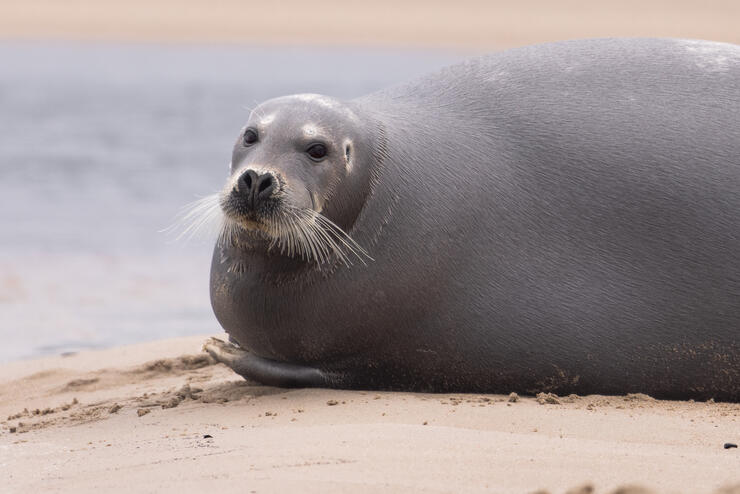
Moosonee is the most accessible place in the province to reach Ontario’s saltwater coastline. Just a short boat ride away from town you’ll find James Bay, the southernmost part of the Arctic Ocean. These waters are home to incredible marine wildlife that you won’t see anywhere else in the province. Look out for seals basking on the sandbars of the Moose River and pods of Beluga Whales graciously swimming in what feels like, the endless sea.
Located at the junction of the Moose River and James Bay you’ll find two migratory bird sanctuaries. Millions of birds use these protected areas each year as a stop-over on their way to and from the Arctic. You’re likely to see a variety of ducks, shorebirds, cranes, and geese frequenting the tidal flats and skies.
A tour of the bay provides an unbelievable opportunity for visitors to experience saltwater within the province of Ontario in the historic waters of James Bay. Don’t forget your binoculars and cameras! With ample opportunity for birding and wildlife photography, you’re going to want to be prepared to capture the moment.
2. Experience Fishing on the Moose River
- Organize a tour with Moose Cree First Nation
- Contact tourism operator Kim Cheechoo
- Call ahead and book with tour operator
- Cash tours
- Bring cash and hire a boat taxi from the Moosone or Moose Factory docks
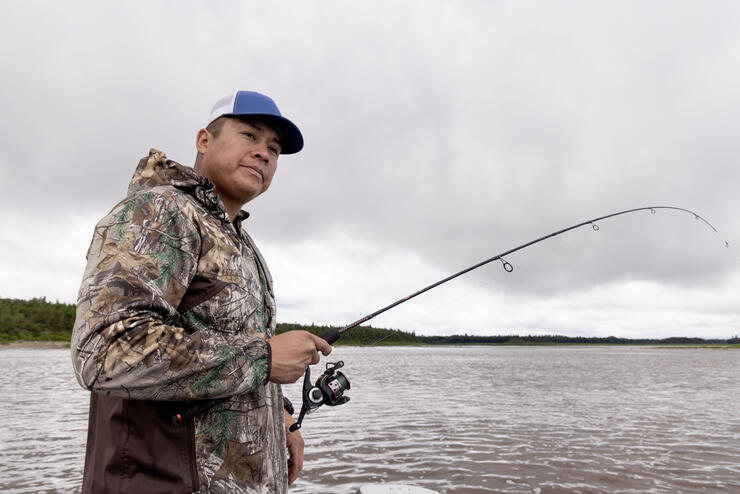
Like many Northern rivers in Ontario, the fishing on the Moose River is exceptional (especially if you know where to go). Hire a guide to take you out, they are not only knowledgable on the areas but also great company for a solo traveler. You'll have the opportunity to fish for Walleye, Northern Pike, Brook Trout, and many other species of fish on the Moose River and its tributaries. Make sure to have the appropriate fishing license and awareness of Zone 8 fishing regulations.
But the day isn’t done when you’ve caught your limit. Clean and cook your fish on the banks of the Moose River to experience a delicious meal in the pristine wilderness of the Hudson Bay Lowlands.
3. Learn and Take Part in Traditional Cree Cooking
- Call Ahead
- Organize a tour with Moose Cree tourism operator Kim Cheechoo
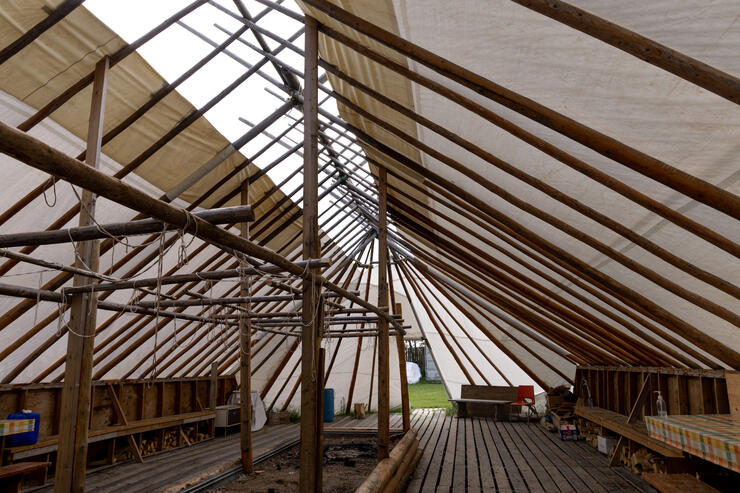
Since time immemorial the people of Moose Cree First Nation have lived off the land in the James Bay and Hudson Bay Lowlands region. Their cooking style draws on inspiration from local foods.
The Fall Goose Hunt provides food for many members of the community. Nowadays goose is prepared in a variety of different ways, but traditionally it was hung over the fire in a tipi and slow-cooked; a cooking style known as sagabon.
More than just exceptional cuisine, sagabon is rich in the culture of the Moose Cree people and the concept of sharing and community. If your mouth is watering just reading this, look into experiencing a traditional sagabon during your stay in the Moose Cree homelands.
4. Camp Under the Stars at Tidewater Provincial Park
- No booking necessary
- There is a cash deposit bin on-site for visitors
- Bring drinking water
- There are no facilities running in the park. Due to the potential salinity of the water surrounding the park, bring freshwater with you
- Get there by water taxi or personal craft
- You can get to Tidewater Provincial Park by water taxi (approximately $10-20 cash) or by taking your own personal watercraft
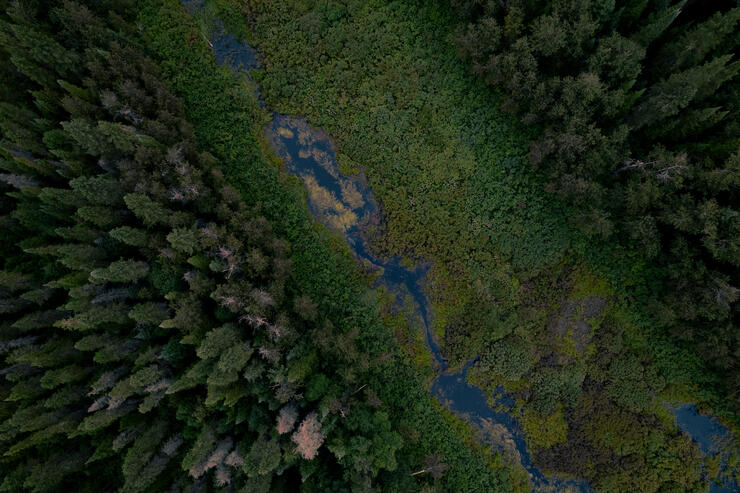
Tidewater Provincial Park is the northernmost operating park in the province of Ontario. Run by Moose Cree First Nation in conjunction with the Ministry of the Environment, Conservation and Parks, Tidewater is one of the province’s most unique parks to pitch a tent in. Tidewater’s namesake comes from the changing tides of the Arctic Ocean affecting the water levels on the Moose River. Made up of five islands in the Moose River between the town of Moosonee and Moose Factory Island, Tidewater is the only operating park in the province where you have the potential of seeing marine wildlife. Pitch a tent, start a fire, and enjoy a peaceful evening under the stars. On a clear night, you may even be gifted with a showing of the beautiful Northern Lights dancing in the sky above the Moose Cree homelands.
When camping at Tidewater PP, it’s important to note that there aren’t any services provided at the park. Campers are expected to pay their camp fees by dropping money in a box located on Charles Island. There are also no water stations throughout the park.
Due to the park’s proximity to James Bay, it’s recommended that you bring water with you before camping for the night on the island. The water surrounding the park is filled with sediment and low levels of salt water. If you’re approaching the island as a last stop on a river canoe trip, consider filling up your water filter upriver of the park to make sure you have fresh drinking water for the night.
To get to the park, you can take your own boat or hire a water taxi from the Moosonee or Moose Factory docks. Taxi drivers will charge between $10-20 cash per customer. Make sure to get their contact info to schedule a ride back. While there aren’t any spots to charge electrical devices, there is cell service in the park.
5. Visit the Cree Cultural Interpretive Centre
- Call ahead
- Organize a tour with Moose Cree tourism operator Kim Cheechoo
- Open 9-5 during the week in the summer
- Call ahead all other times of the year
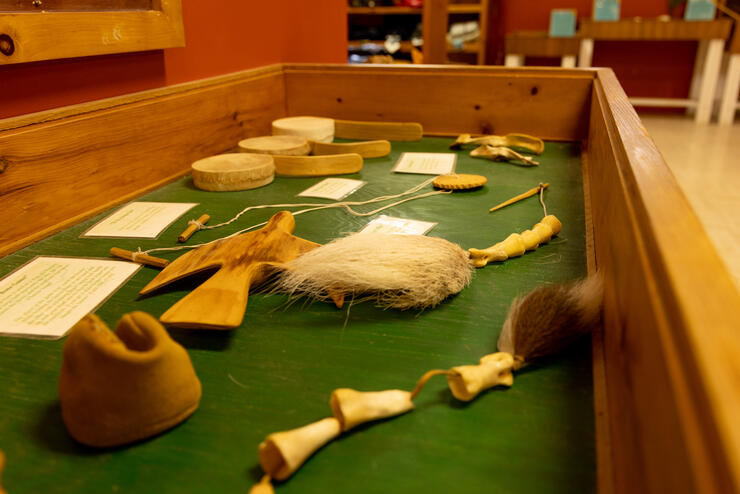
Featuring both indoor and outdoor exhibits that educate visitors on the culture of the Cree people both pre and post-European contact, the CCIC is one of the most fascinating museums on Moose Factory Island.
Visitors can learn about the Cree culture by viewing artifacts, educational displays, and local crafts inside. The CCIC features a section where visitors can purchase small gifts and local crafts such as beaver hats made by community members; the perfect authentic souvenir to commemorate a trip to the Moose Cree homelands.
Outside, visitors can walk through a large tipi that’s used by the Moose Cree First Nation tourism staff to cook sagabon.
The CCIC is open during the day throughout the summer months. At other times of the year reach out to tourism operator Kim Cheechoo to schedule a visit.
6. View The Hudson Bay Company Staff House
- Call ahead
- Organize a tour with Moose Cree tourism operator Kim Cheechoo

Moose Factory, originally called Moose Fort, was the second post established by the Hudson Bay Company during the fur trade. Burned down several times in battles between English and French fur traders, modern day Moose Factory was established in 1821 after the merger of the Hudson Bay Company and their rival, the Northwest Company from Montréal. Serving as an integral trading post between the English, French and Cree peoples, the island is still home to historical artifacts from the fur trading days.
Still standing on the island is the Hudson Bay Company Staff House. Built between 1847-50, it’s the last surviving officer’s dwelling in Canada. The building was altered several times until it was acquired by the Ontario Heritage Trust in 1978. Now, the first floor is home to an exhibit on the history of Moose Factory featuring items from the fur trade along with Cree culture.
For any history buff, this is a must-see exhibit in Canada. The showcase of artifacts in a small unassuming museum presents visitors with a truly unique opportunity to learn about the fur trade and Cree culture.
7. Check out old Hudson Bay buildings in Centennial Park
- Call ahead
- Organize a tour with Moose Cree tourism operator Kim Cheechoo
- No booking necessary (you can walk through the park with no reservation)
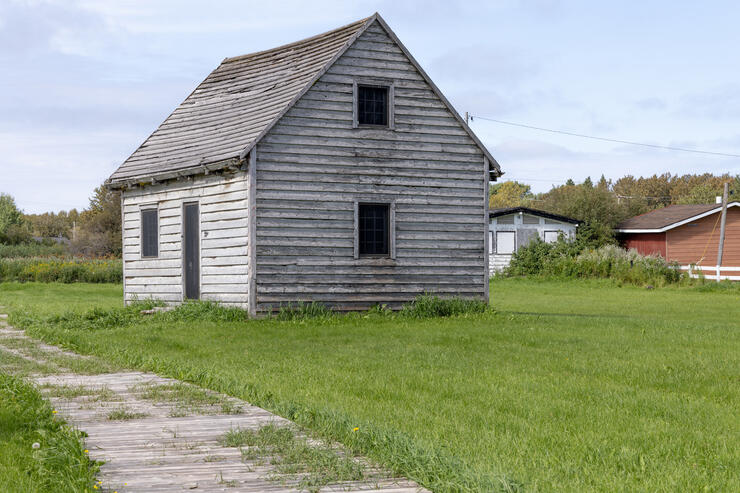
A stroll along the Centennial Park boardwalk is a walk through the history of the Hudson Bay Company. Home to four different houses built in the 1800s (including the oldest known remaining HBC servant house in Canada, the only surviving Cree summer house in Moose Factory, and the last known surviving HBC blacksmith’s shop in Canada), visitors can catch a glimpse into the lives of HBC employees in the 19th century.
Enjoy a literal blast from the past by checking out artifacts such as a cast iron cannon (cannons were used to protect the fort during the fur trade) that can be found around the park.
Currently, the houses are only available to view from the exterior.
Centennial park is also home to the HBC cemetery, an exclusive burial ground for HBC employees and their families.
8. Visit the Railcar Museum
- Call ahead
- Organize a tour with Mayor Wayne TaiPale
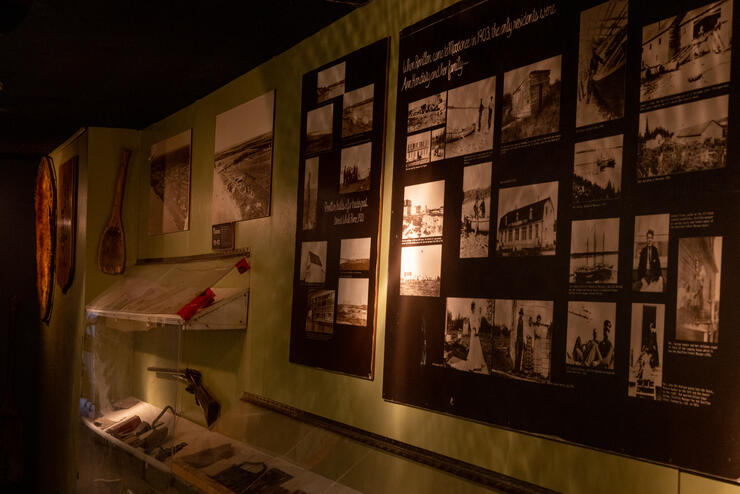
Hidden in a refurbished railcar is a museum detailing the history of the town of Moosonee. From the culture of the Moose Cree people to the town’s roots in the North American Fur trade all the way to the modernization of the municipality with the addition of the rail system in 1931, visitors can leave the museum with a complete overview of the small frontier town’s history. Call ahead and ask current Moosoonee mayor Wayne TaiPale to take you through the museum. Not only is he a wealth of knowledge on the artifacts in the museum, but he can answer almost any question you have about the history and culture of the hub of James Bay.
9. Browse the furs at Creegonquin Furs
- Call ahead
- Organize a tour with owners Randy Cota and Betty Crawford
Betty Crawford and her husband Randy Cota, who runs a trap line in the Hudson Bay Lowlands, sell furs in the town of Moosonee. If you’re interested in checking out their variety of furs and potentially taking home a souvenir, reach out to them and book a tour. They also offer bay tours, fishing excursions, and traditional experiences.
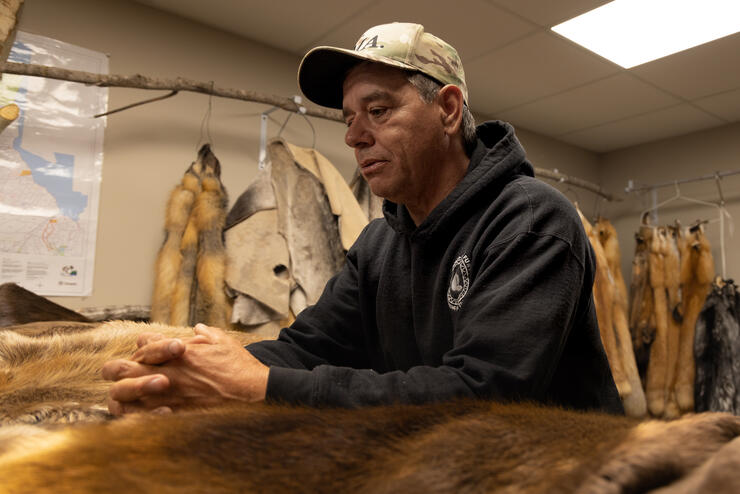
10. Stroll over to the old Revillon Frères Museum
- Currently non-operational
- Organize a tour with Moosonee Mayor Wayne Taipale or visit the Railcar Museum as an alternative
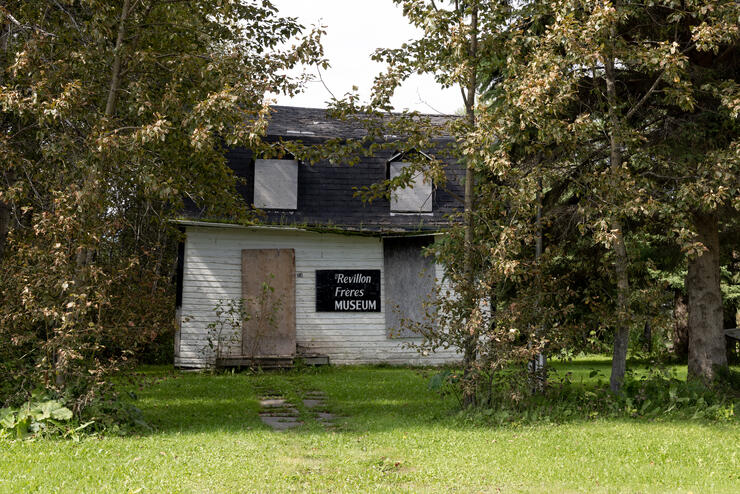
Unlike the community of Moose Factory, the municipality of Moosonee didn’t play an integral role in the early days of the fur trade. The community was founded as a trading post for Revillon Frères, a fur trading business of French origin that set up on the Moose River in 1903 to compete with the HBC on Moose Factory Island.
There used to be a museum in Moosonee displaying Revillon Frères' history and artifacts in one of their old frontier-style buildings, but it is currently non-operational (while the building is still standing, it’s unsafe). The artifacts from that museum are now on display in the railcar museum. Visitors who check out the railcar museum can then head down to Revillon Road to see the outside of the Revillon Frères building.
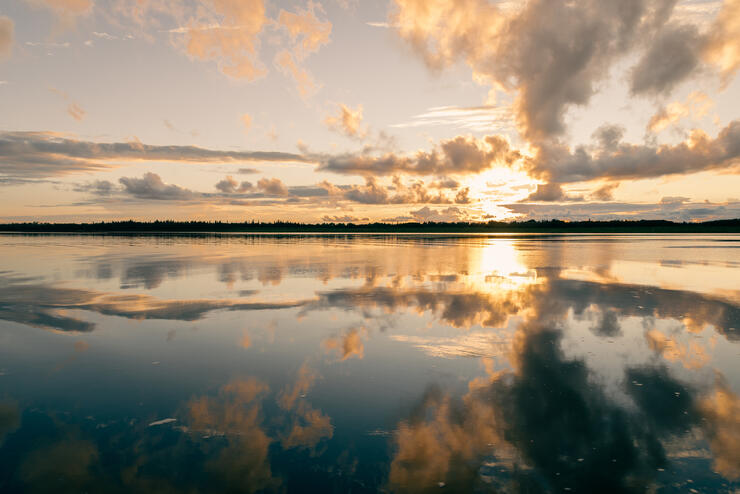
11. Experience the Gathering of our People (GOOP)
- Annual celebration in August
- For more information click here
Gathering of our People is an annual week-long celebration held by Moose Cree First Nation celebrating Cree culture. The event, which usually takes place during the first week of August, is packed with vendors, food, shows, teachings, cultural events, and guest performances by prominent musicians. Check out the Moose Cree First Nation website for more information.
12. Celebrate Moose Factory's 350th anniversary
- Events and celebrations from March 2023 through February 2024
- For more information click here
This March, Moose Cree First Nation will begin a year of celebration to commemorate 350 years since Moose Factory was officially established as well as the people who’ve called it home since time immemorial.
Check out the Moose River Heritage and Hospitality Association website to stay up to date on the festivities.
Recommended Articles
The Seven's Best Hikes, Biking Trails and Lakes

7 Best Spots to Check Out in The Seven

Budget Bliss: Explore Northeastern Ontario Without Breaking the Bank

Bring Your Fam!

Time to Unwind: 6 Spa Havens to Discover In The Seven
5 Amazing Places to SUP in Northeastern Ontario
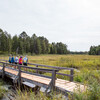
5 Amazing Bike Rides to Discover

Northern Lights in Northeastern Ontario

Northeastern Ontario's Best Pride Festivals
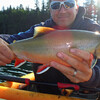
Fish for one of the World's Rarest Species of Trout

An Insider's Guide to Manitoulin Island
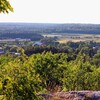
6 Small-Town Gems to Explore in Northeastern Ontario

11 Best Things to Do in Kapuskasing, Ontario

